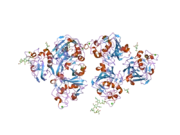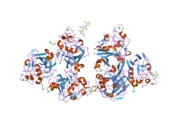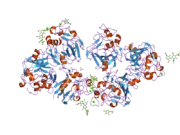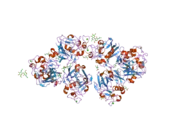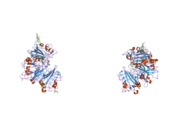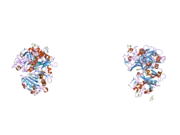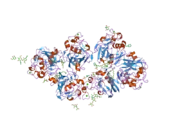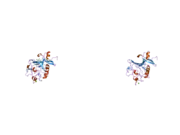| FCN2 | |||||||||||||||||||||||||||||||||||||||||||||||||||
|---|---|---|---|---|---|---|---|---|---|---|---|---|---|---|---|---|---|---|---|---|---|---|---|---|---|---|---|---|---|---|---|---|---|---|---|---|---|---|---|---|---|---|---|---|---|---|---|---|---|---|---|
 | |||||||||||||||||||||||||||||||||||||||||||||||||||
| |||||||||||||||||||||||||||||||||||||||||||||||||||
| Identifiers | |||||||||||||||||||||||||||||||||||||||||||||||||||
| Aliases | FCN2, EBP-37, FCNL, P35, ficolin-2, ficolin 2 | ||||||||||||||||||||||||||||||||||||||||||||||||||
| External IDs | OMIM: 601624 HomoloGene: 3031 GeneCards: FCN2 | ||||||||||||||||||||||||||||||||||||||||||||||||||
| |||||||||||||||||||||||||||||||||||||||||||||||||||
| |||||||||||||||||||||||||||||||||||||||||||||||||||
| |||||||||||||||||||||||||||||||||||||||||||||||||||
| Wikidata | |||||||||||||||||||||||||||||||||||||||||||||||||||
| |||||||||||||||||||||||||||||||||||||||||||||||||||
Ficolin-2, which was initially identified as L-ficolin, is a protein that in humans is encoded by the FCN2 gene.[2][3]
The product of this gene belongs to the ficolin family of proteins. This family is characterized by the presence of a leader peptide, a short N-terminal segment, followed by a collagen-like region, and a C-terminal fibrinogen-like domain. This gene is predominantly expressed in the liver, and has been shown to have carbohydrate binding and opsonic activities. Alternatively spliced transcript variants encoding different isoforms have been identified.[3]
References
- ↑ "Human PubMed Reference:". National Center for Biotechnology Information, U.S. National Library of Medicine.
- ↑ Endo Y, Sato Y, Matsushita M, Fujita T (Feb 1997). "Cloning and characterization of the human lectin P35 gene and its related gene". Genomics. 36 (3): 515–21. doi:10.1006/geno.1996.0497. PMID 8884275.
- 1 2 "Entrez Gene: FCN2 ficolin (collagen/fibrinogen domain containing lectin) 2 (hucolin)".
Further reading
- Lu J, Le Y (1999). "Ficolins and the fibrinogen-like domain". Immunobiology. 199 (2): 190–9. doi:10.1016/s0171-2985(98)80026-0. PMID 9777405.
- Edgar PF (1996). "Hucolin, a new corticosteroid-binding protein from human plasma with structural similarities to ficolins, transforming growth factor-beta 1-binding proteins". FEBS Lett. 375 (1–2): 159–61. doi:10.1016/0014-5793(95)01205-S. PMID 7498469. S2CID 35484726.
- Matsushita M, Endo Y, Taira S, et al. (1996). "A novel human serum lectin with collagen- and fibrinogen-like domains that functions as an opsonin". J. Biol. Chem. 271 (5): 2448–54. doi:10.1074/jbc.271.5.2448. PMID 8576206.
- Le Y, Tan SM, Lee SH, et al. (1997). "Purification and binding properties of a human ficolin-like protein". J. Immunol. Methods. 204 (1): 43–9. doi:10.1016/S0022-1759(97)00029-X. PMID 9202708.
- Kilpatrick DC, Fujita T, Matsushita M (1999). "P35, an opsonic lectin of the ficolin family, in human blood from neonates, normal adults, and recurrent miscarriage patients". Immunol. Lett. 67 (2): 109–12. doi:10.1016/S0165-2478(98)00147-3. PMID 10232391.
- Taira S, Kodama N, Matsushita M, Fujita T (2001). "Opsonic function and concentration of human serum ficolin/P35". Fukushima Journal of Medical Science. 46 (1–2): 13–23. doi:10.5387/fms.46.13. PMID 11446374.
- Cseh S, Vera L, Matsushita M, et al. (2003). "Characterization of the interaction between L-ficolin/p35 and mannan-binding lectin-associated serine proteases-1 and -2". J. Immunol. 169 (10): 5735–43. doi:10.4049/jimmunol.169.10.5735. PMID 12421953.
- Strausberg RL, Feingold EA, Grouse LH, et al. (2003). "Generation and initial analysis of more than 15,000 full-length human and mouse cDNA sequences". Proc. Natl. Acad. Sci. U.S.A. 99 (26): 16899–903. Bibcode:2002PNAS...9916899M. doi:10.1073/pnas.242603899. PMC 139241. PMID 12477932.
- Ohashi T, Erickson HP (2004). "The disulfide bonding pattern in ficolin multimers". J. Biol. Chem. 279 (8): 6534–9. doi:10.1074/jbc.M310555200. PMID 14660572.
- Ota T, Suzuki Y, Nishikawa T, et al. (2004). "Complete sequencing and characterization of 21,243 full-length human cDNAs". Nat. Genet. 36 (1): 40–5. doi:10.1038/ng1285. PMID 14702039.
- Lynch NJ, Roscher S, Hartung T, et al. (2004). "L-ficolin specifically binds to lipoteichoic acid, a cell wall constituent of Gram-positive bacteria, and activates the lectin pathway of complement". J. Immunol. 172 (2): 1198–202. doi:10.4049/jimmunol.172.2.1198. PMID 14707097.
- Krarup A, Thiel S, Hansen A, et al. (2005). "L-ficolin is a pattern recognition molecule specific for acetyl groups". J. Biol. Chem. 279 (46): 47513–9. doi:10.1074/jbc.M407161200. PMID 15331601.
- Herpers BL, Immink MM, de Jong BA, et al. (2006). "Coding and non-coding polymorphisms in the lectin pathway activator L-ficolin gene in 188 Dutch blood bank donors". Mol. Immunol. 43 (7): 851–5. doi:10.1016/j.molimm.2005.06.035. PMID 16076493.
- Tanio M, Kondo S, Sugio S, Kohno T (2006). "Overexpression, purification and preliminary crystallographic analysis of human M-ficolin fibrinogen-like domain". Acta Crystallographica Section F. 62 (Pt 7): 652–5. doi:10.1107/S1744309106019786. PMC 2242945. PMID 16820685.
- Chen X, Katoh Y, Nakamura K, et al. (2006). "Single nucleotide polymorphisms of Ficolin 2 gene in Behçet's disease". J. Dermatol. Sci. 43 (3): 201–5. doi:10.1016/j.jdermsci.2006.05.010. PMID 16839748.
- Garlatti V, Belloy N, Martin L, et al. (2007). "Structural insights into the innate immune recognition specificities of L- and H-ficolins". EMBO J. 26 (2): 623–33. doi:10.1038/sj.emboj.7601500. PMC 1783469. PMID 17215869.
- Chapman SJ, Vannberg FO, Khor CC, et al. (2007). "Functional polymorphisms in the FCN2 gene are not associated with invasive pneumococcal disease". Mol. Immunol. 44 (12): 3267–70. doi:10.1016/j.molimm.2006.04.013. PMID 17382393.
- Munthe-Fog L, Hummelshøj T, Hansen BE, et al. (2007). "The impact of FCN2 polymorphisms and haplotypes on the Ficolin-2 serum levels". Scand. J. Immunol. 65 (4): 383–92. doi:10.1111/j.1365-3083.2007.01915.x. PMID 17386030. S2CID 33698114.
This article is issued from Wikipedia. The text is licensed under Creative Commons - Attribution - Sharealike. Additional terms may apply for the media files.

